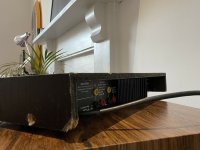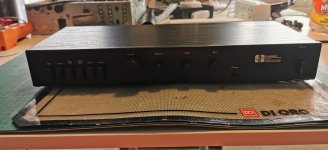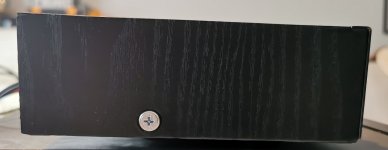Might be worth getting some cheap 5 pin DIN plugs and some cheap phono leads and chopping them up and making your own.
DIN standard connections were often abused (Naim's many interconnecting cables were a classic example) and you can't always identify what cable is supposed to connect to what input, given that some sources, like radios and some tuners, microphones etc. will be mono and the specified lead simply bridges both or loses one channel within the cable/connector.
Creek's own diagram should clear up the mystery of what you should find. Microphones, radiograms, record players, tape decks, radios (not necessarily stereo tuners) were often preferred, existing mono sources that back in the day, were also connected to stereo amps for improved audio, headphones use etc.
The weird numbering of 5pin DIN actually derives from the 3 pin DIN standard. So, squeeze an extra pin between the existing ones and call these pins 4 and 5. Now, you have a 5 Pin connector with a silly numbering order because the designer(s) wanted to retain the original 3-pin identities and plugs to be a compatible fit where appropriate.
Don't you just love how clever the DIN standards were?
Creek's own diagram should clear up the mystery of what you should find. Microphones, radiograms, record players, tape decks, radios (not necessarily stereo tuners) were often preferred, existing mono sources that back in the day, were also connected to stereo amps for improved audio, headphones use etc.
The weird numbering of 5pin DIN actually derives from the 3 pin DIN standard. So, squeeze an extra pin between the existing ones and call these pins 4 and 5. Now, you have a 5 Pin connector with a silly numbering order because the designer(s) wanted to retain the original 3-pin identities and plugs to be a compatible fit where appropriate.
Don't you just love how clever the DIN standards were?

Last edited:
all sorted, it was the lead, so thats something ive learned, and that is never take any din lead for granted!
happy days 👍
happy days 👍
all finished.remember when i first got this what a wreck it was (pics 1 and 2) so just finished it today, given it a bit of an upgrade with the fixings and im not a master craftsman by any strech of the imagination but it looks alot better now, and also it sounds pretty good,if a little bright for my taste.
Attachments
That looks terrific, nice job 👍
I think you'll find the Leak has a softer and more musical presentation than the Creek.
I think you'll find the Leak has a softer and more musical presentation than the Creek.
ive started on it today.That looks terrific, nice job 👍
I think you'll find the Leak has a softer and more musical presentation than the Creek.
certainly i different kettle of fish top what im used to.
looking forward to getting it going, not sure how much its going to cost me though, all those old caps
I'm guessing the caps are axial types which are harder to get. Radials are fine if you can fit them neatly though.
For a view of the caps and what else is inside, there's an interesting retrospective review and internal pics of the similar Leak 30 plus here: https://www.hifinews.com/content/leak-stereo-30-plus-amplifier-page-2. I don't know why it starts at page 2 and it seems crazy to publish a review of a 50+ year old product in a news magazine but I guess that's a reflection of just how uninspiring and disconnected from the user, today's consumer audio products have become. It seems most, if not all the axial lead types would be quite easy to replace with radial lead caps. too. If actually fitted in the Leak 30, the large, upright clamp mounted cans might prove hard to match though.
Last edited:
'sure doesit looks alot better now, and also it sounds pretty good,if a little bright for my taste.
 - what did you do to restore the disintegrated chipboard though; rebuild the whole cover with plywood, as you may have indicated earlier?
- what did you do to restore the disintegrated chipboard though; rebuild the whole cover with plywood, as you may have indicated earlier?Also, the bright sound. Is it unusually bright in your experience, or do you find that other brands and models normally present a bright sound too? I'm not exactly a kid any more and understanding how others perceive brightness or shrillness is not so easy.
hi ian'sure does- what did you do to restore the disintegrated chipboard though; rebuild the whole cover with plywood, as you may have indicated earlier?
Also, the bright sound. Is it unusually bright in your experience, or do you find that other brands and models normally present a bright sound too? I'm not exactly a kid any more and understanding how others perceive brightness or shrillness is not so easy.
i made a complete new cover out of ply, then covered it with fablon.
I had to get one of the guys at work to make the resess in the top cover for the transformer as i dont own a router
The reason i found it bright.
I used it mostly with the bass fully up and the treble at flat or less
normaly i would have the treble higher, say 3/4 up and the bass reduced as it would be too much full on.
just different amps, sounding different i guess, and im proberbly used to amps that have a loudness feature
I think creek brought this amp out as a challenger to the 3020, but in my opinion,the nad wins easily.
It seemed to struggle past the mid volume point, kind of ran out of steam a bit, but to be fair it was trying to drive a pair of KEF concord IV's, so it would proberbly be better driving something a bit smaller.
Sounds like Blue Peter to me. Here's one we made earlier 😉i made a complete new cover out of ply, then covered it with fablon.
so given the age, would you replace all the caps? regardless?I'm guessing the caps are axial types which are harder to get. Radials are fine if you can fit them neatly though.
I think I would yes.
Although I'm not always a fan of replacing all caps on sight I think in this case it makes sense. There is old and there is old... and this one is old. It may be that the smaller caps are the ones to have deteriorated the most but in any case a good percentage would need testing to determine if there was general deterioration. Its not just the value that changes, its the e.s.r. and 'goodness' of the cap that deteriorates. Its a bit like taking a twenty year old PP3 battery and finding it still reads 9v. It may well but just trying pulling any current from it. It would be like a 9v battery with a high value series resistor... useless. Similar happens with some caps.
Although I'm not always a fan of replacing all caps on sight I think in this case it makes sense. There is old and there is old... and this one is old. It may be that the smaller caps are the ones to have deteriorated the most but in any case a good percentage would need testing to determine if there was general deterioration. Its not just the value that changes, its the e.s.r. and 'goodness' of the cap that deteriorates. Its a bit like taking a twenty year old PP3 battery and finding it still reads 9v. It may well but just trying pulling any current from it. It would be like a 9v battery with a high value series resistor... useless. Similar happens with some caps.
- Home
- Amplifiers
- Solid State
- Creek 4040




